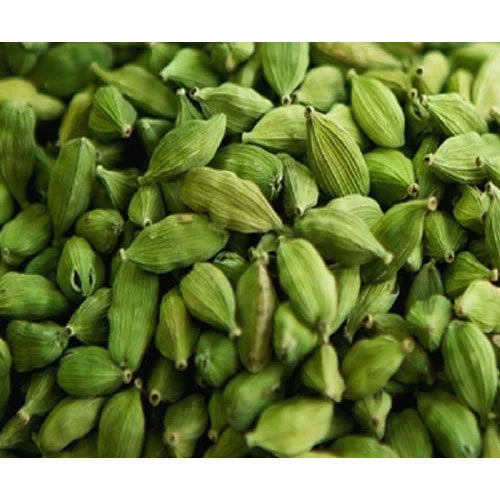
Effective Strategies for Cardamom Disease Control
Share
Introduction
Cardamom, a highly valued spice, is susceptible to various diseases that can significantly impact its yield and quality. Here’s a detailed exploration of common cardamom diseases, their management strategies, and additional preventative measures:

Common Cardamom Diseases:
Katte Disease (Cardamom Mosaic Disease):
Cause: Cardamom mosaic virus (CaMV)
Transmission: Primarily transmitted by banana aphids (Aphididae family) feeding on infected plants.
Symptoms:
Early signs: Faint, light green, elongated streaks running parallel to the veins on young leaves.
Advanced stages: Distinct mosaic pattern on leaves, stunted growth, reduced tillering, significant decline in capsule production and quality.

Management:
Prevention: No cure exists, so focus on preventing the spread of the virus.
Monitoring: Regularly inspect cardamom plants for signs of infection.
Rogueing: Immediately remove and destroy infected plants by burning or deep burial to stop further spread.
Aphid Control: Implement strategies to manage aphid populations:
Natural predators: Introduce ladybugs or lacewings to your plantation.

Insecticides (last resort): Use systemic insecticides following recommended protocols.
Resistant Varieties: Research and plant cardamom varieties with some resistance to Katte disease.
Clump Rot or Rhizome Rot:
Cause: Fungal pathogens belonging to the Pythium genus.
Favorable Conditions: Thrives in wet, poorly drained soils with high moisture content.
Symptoms:
Early signs: Yellowing or paling of foliage, particularly at the base of the shoots.
Advanced stages: Infected shoot base becomes soft and brittle, eventually breaking away. The entire plant may wilt and die.

Management:
Drainage: Ensure your cardamom plantation has well-draining soil (raised beds or drainage channels).
Water Management: Avoid overwatering, especially during monsoon season.
Sanitation: Remove and destroy infected plants entirely (including the rhizome) to prevent fungal spread.
Soil Amendments: Apply lime to adjust soil pH and promote healthy microbial activity. Fertilize around healthy plants with superphosphate or Ammonium Phosphate to improve soil health and plant resistance.
Crop Rotation: Practice crop rotation with non-susceptible crops (legumes or other spices) to disrupt the life cycle of soil-borne pathogens.
Organic Management: Explore organic fungicides (neem oil or copper-based sprays) for disease prevention, though effectiveness might be lower than synthetic options.

Balanced Fertilization: Maintain a balanced fertilization program to ensure optimal plant health and disease resistance.
Integrated Pest Management (IPM): Implement an integrated pest management (IPM) approach that combines multiple strategies (cultural, biological, and chemical) for holistic disease management. By adopting these comprehensive disease management strategies, it can effectively safeguard your cardamom crop from various diseases and ensure a healthy, high-yielding harvest.
Conclusion
Effective cardamom disease management is critical for sustaining healthy crops and ensuring high yields. By integrating various strategies such as regular monitoring, adopting resistant varieties, implementing proper cultural practices, and utilizing biological control methods, farmers can significantly reduce the impact of diseases on cardamom plants. Advanced techniques, including the use of organic treatments and precision agriculture tools, further enhance the ability to manage and prevent disease outbreaks. Sustainable disease management practices not only safeguard the crop but also promote environmental health and economic stability for farmers. Therefore, a comprehensive approach combining traditional knowledge with modern innovations is essential for the successful cultivation of cardamom.
